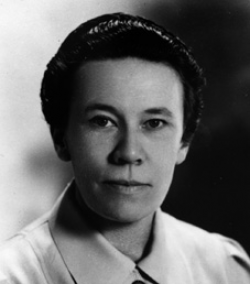Professor Katherine Esau

- Born
- 3 April 1898
- Died
- 4 June 1997 (age 99)
Katherine Esau was a Russian-born American botanist who helped to extensively broaden our understanding of plant structure and function. She became a world renowned scientist though her journey to get there was a difficult one.
Esau was born in 1898 in a territory in Russia which has since become part of Ukraine. She had a difficult upbringing and immigrated to Germany in 1919 to escape the Bolshevik Revolution and the ensuing civil war. In 1922 her parents moved again, this time to America as a result of the heavy political climate in Germany that followed the First World War.
Settling in California, Esau found a job working at a sugar company. She was employed on a team trying to fight a virus attacking the sugar beet plant that was destroying majority of the crop. The team was later moved to the University of California, Davis where Esau enrolled on a doctorate degree in botany. In 1931 she finished her degree and became an instructor of botany, later receiving a fellowship to study at Harvard University.
Stemming from her first job in America, Esau's research delved in to the nature of how viruses affect the structure of plants and their development of food-conducting tissues within the stem. This led her to study in more detail the phases of development of various plant tissues and her work was instrumental in furthering our understanding of the basic anatomy of plants.
Esau published the Plant Anatomy textbook in 1953 in which she documented much of her research. The book quickly became a key text and reference for plant structure, describing in detail for the first time many concepts and terms concerning flowers, fruits and seeds.
She absolutely dominated the field of plant anatomy and morphology for several decades. She set the stage for all kinds of modern advances in plant physiology and molecular biology.
Dr. Peter Raven, director of the Missouri Botanical Garden
Described as a 'life-long student', Esau was continuously finding new ways into plant research. She became so fascinated by the recent developments of the electron microscope that although she officially retired in 1965 she continued her research until 1990.
In 1957 Esau became only the sixth woman to be elected to the National Academy of Sciences and in 1989 was the first botanist to be presented the US National Medal of Science.



